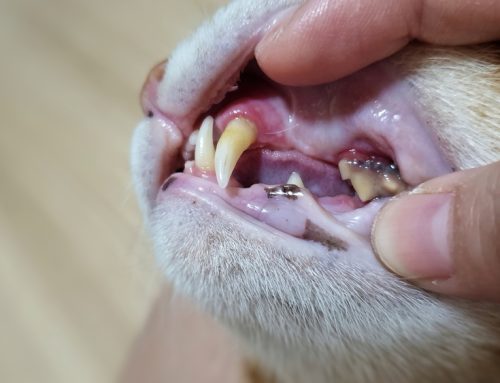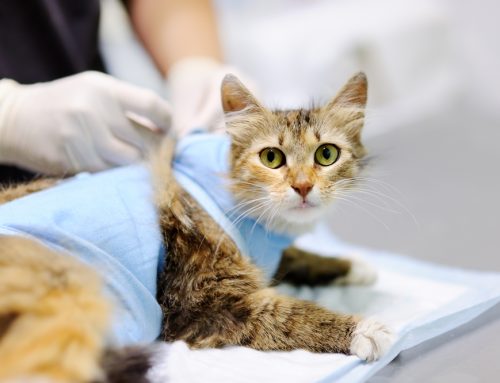The bond with a pet is special, and most pet owners will agree their pets are never with them long enough. It can be hard to notice the first patch of grey fur turning into a white muzzle as your four-legged companion approaches their golden years. Fortunately, advances in veterinary medicine have resulted in pets living longer, healthier lives. However, as pets age, their body and organs begin to show signs of wear and tear, and some activities, like rigorous games of fetch, may become more difficult for them to enjoy.
Like people, aging pets are prone to developing painful arthritis. In fact, one in five dogs will experience joint problems during their lifetime, and breeds with genetic predispositions may have an increased incidence of joint and bone problems. Although less active than their canine counterparts, more than 40% of cats may suffer from this painful, degenerative disease. Our El Paso Animal Hospital team wants to ensure pet owners can recognize arthritis signs, and know what to do when their pet is diagnosed.
What is arthritis in pets?
Arthritis is a general term that refers to joint swelling. The most common form of arthritis in pets is osteoarthritis (OA), or degenerative joint disease. A healthy pet’s joints are protected by cartilage, which provides a smooth surface for their bones to glide over during movement. OA is a chronic, progressive, degenerative, inflammatory disease that results from erosion, or loss, of joint cartilage. OA in pets also is characterized by a thickened joint capsule, new bone growth around an affected joint, and pain. Any aging pet or breed is at risk for developing OA. However, older, overweight, or larger breeds have an increased risk. Other OA risk factors include:
- Cranial cruciate ligament disease
- Hip dysplasia
- Luxating patella
- Elbow dysplasia
- Broken bone(s)
- Athletic pets (e.g., agility or hunting dogs)
- Pet who do not receive proper nutrition
What are arthritis signs in pets?
Recognizing OA signs in pets may be challenging because they can mimic other diseases or problems. It can be especially difficult for cat owners to recognize OA because cats may not show any obvious signs of pain. Although OA is more common in older pets, some younger pets will have subtle signs, such as stiffness after vigorous exercise. Common signs may include:
- Reluctance to jump or climb stairs
- Reluctance to play or exercise
- Decreased activity
- Limping that becomes worse over time
- Stiff gait that increases after periods of rest
- Pain or swelling around joints
- Muscle atrophy
- Vocalization when touched
- Hunched posture
- Increased hiding
- Difficulty grooming, or excessively grooming one body location
- Behavior changes in cats, such as unexpected aggression
- Urinating or defecating outside of the litter box
How are pets diagnosed with arthritis?
Bring your pet in for an examination with your veterinarian if they are showing any arthritis signs. Your pet will receive a general physical and orthopedic examination, which will include an evaluation of their gait, range of motion, and joint function. Arthritis is painful, and some pets may require light sedation in order to have their joints fully evaluated. Sedation also will allow our veterinarian to perform a low-stress X-ray of your pet’s bones and joints. Additionally, our El Paso Animal Hospital veterinarian may recommend blood tests to rule out underlying illness and check your pet’s overall organ health. Blood tests are critical to ensure your pet’s organs can safely process any medications that may be required to treat arthritis pain.
How is arthritis treated in pets?

Although there is no cure for arthritis, many treatments are available to ease your pet’s discomfort and slow the disease’s progression. Our Derby veterinarian will provide your pet with a customized treatment plan based on the severity of their arthritis. Pets who are diagnosed should receive two or more yearly veterinary examinations to ensure adequate OA management and to monitor disease progression. Treatments may include:
- Pain medication — Nonsteroidal anti-inflammatories, such as Rimadyl, meloxicam, or Onsior, can decrease your pet’s inflammation and pain.
- Joint support supplements — Veterinary formulated glucosamine supplements, like Dasuquin joint chews, can provide your pet a tasty treat that contains nutrients to support their joint health.
- Specialized diet — Maintenance of a healthy weight is critical to decrease pain and slow arthritis progression. Consider scheduling your pet for a meeting with our nutritional counseling service to ensure they are receiving the correct amount and type of nutrition.
- Low-impact exercise — High-impact exercise is not advised for pets who are diagnosed with OA. However, low-impact activities, such as walking or swimming, can help prevent joint stiffness and promote healthy weight management.
- Alternative treatments — Additional treatments, such as our cold laser therapy, can help reduce inflammation and reduce your pet’s OA pain.
Call our El Paso Animal Hospital office if you have any questions about arthritis in your pet, or to schedule them for an evaluation. We are here to help keep your pet’s joints healthy and pain-free.







Leave A Comment